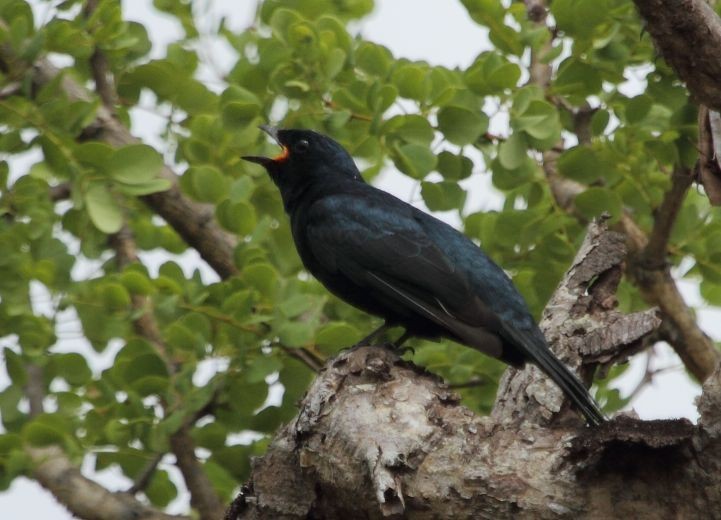Black Cuckooshrike
A species of African Black Cuckooshrikes Scientific name : Campephaga flava Genus : African Black Cuckooshrikes
Black Cuckooshrike, A species of African Black Cuckooshrikes
Botanical name: Campephaga flava
Genus: African Black Cuckooshrikes
Content
Description General Info
 Photo By Alandmanson , used under CC-BY-SA-4.0 /Cropped and compressed from original
Photo By Alandmanson , used under CC-BY-SA-4.0 /Cropped and compressed from original Description
The black cuckooshrike (Campephaga flava) is a species of bird in the cuckooshrike family Campephagidae. The species is closely related to Petit's cuckooshrike and the red-shouldered cuckooshrike, and forms a superspecies with them. It is also known as the African black cuckooshrike. It is found in Angola, Botswana, Burundi, Democratic Republic of the Congo, Ethiopia, Kenya, Malawi, Mozambique, Namibia, Rwanda, Somalia, South Africa, South Sudan, Swaziland, Tanzania, Uganda, Zambia, and Zimbabwe. Its natural habitats are subtropical or tropical moist lowland forests, dry savanna, and subtropical or tropical dry shrubland. 
Size
22 cm
Nest Placement
Tree
Feeding Habits
Black Cuckooshrike's diet consists predominantly of insects like caterpillars, termite alates, and katydids, complemented by spiders, ants, fruit, and seeds. It forages mainly in the canopy, occasionally on the ground, employing fluttering hops and short flights to catch prey, and sometimes joins mixed-species groups.
Habitat
The black Cuckooshrike predominantly inhabits diverse woodlands and forests, particularly favoring regions with acacia, mopane, and brachystegia trees. They are also found along riparian woodlands, forest edges, and in areas of secondary growth. While they adapt to a range of environments, they exhibit a preference for less dense woodlands over thicker vegetation, avoiding denser undergrowth typically seen in savannas and scrublands.
Dite type
Insectivorous
General Info
Feeding Habits
Bird food type
Species Status
Not globally threatened.